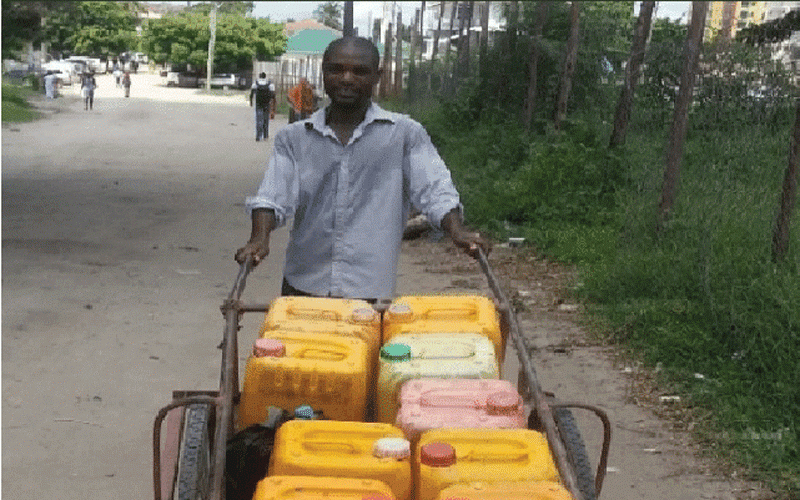At a borehole not far from Mpopoma High School in Bulawayo, Zimbabwe’s second largest city, 48-year-old Sakhile Mulawuzi balances a white 25-litre bucket of water on her head as she holds another 10-litre blue bucket filled with water She trudes back home along a narrow pathway leading to her house in Mpopoma, one of the high-density areas here Similarly, in Masvingo, Zimbabwe’s oldest town, 30-year-old Ruramai Chinoda stands at her neighbor’s house in Rujeko high-density suburb, where she fetches water from a tap because her neighbour has a borehole and shares the precious liquid with the community Nearly 300 kilometres north of Masvingo, 43-year-old Nevias Chaurura, a pushcart operator in Mabvuku high-density suburb in the Zimbabwean capital Harare, struggles with a load of eight 20-litre buckets
He delivers them from door-to-door for a minimal fee as many city dwellers battle to find water These ongoing water shortages are blamed on a lack of planning and the ongoing El Niño drought If the residents were hoping for a change in weather conditions, a report released on December 11, 2024 by the World Meteorological Organisation suggested that while the cooling La Niña climate pattern may develop in the next three months, it is expected to be relatively weak and short-lived Latest forecasts from WMO Global Producing Centres of Long-Range Forecasts indicate a 55% likelihood of a transition from the current neutral conditions (neither El Niño nor La Niña) to La Nina conditions during December 2024 to February 2025, the WMO explains
The return of the ENSO-neutral conditions is then favoured during February to April 2025, with about a 55% chance La Niña refers to the large-scale cooling of the ocean surface temperatures in the central and eastern equatorial Pacific Ocean, coupled with changes in the tropical atmospheric circulation, such as winds, pressure and rainfall Generally, La Niña produces the opposite large-scale climate impacts to El Niño, especially in tropical regions “However, naturally occurring climate events such as La Nina and El Nino events are taking place in the broader context of human-induced climate change, which is increasing global temperatures, exacerbating extreme weather and climate, and impacting seasonal rainfall and temperature patterns,” the WMO warned
WMO secretary-general Celeste Saulo said 2024, which started out with El Niño, is on track to be the hottest year on record “Even if a La Niña event does emerge, its short-term cooling impact will be insufficient to counterbalance the warming effect of record heat-trapping greenhouse gases in the atmosphere,” said Saulo “Even in the absence of El Niño or La Niña conditions since May, we have witnessed an extraordinary series of extreme weather events, including record-breaking rainfall and flooding, which have unfortunately become the new norm in our changing climate.”
Source: The Standard Zimbabwe
All Zim News
All Zim News is a central hub for all things Zimbabwean, curating news from across the country so no story is missed Alongside aggregation, our team of nationwide reporters provides real-time, on-the-ground coverage
Stay informed and connected — reach us at admin@allzimnews.com.
Source: Thestandard
